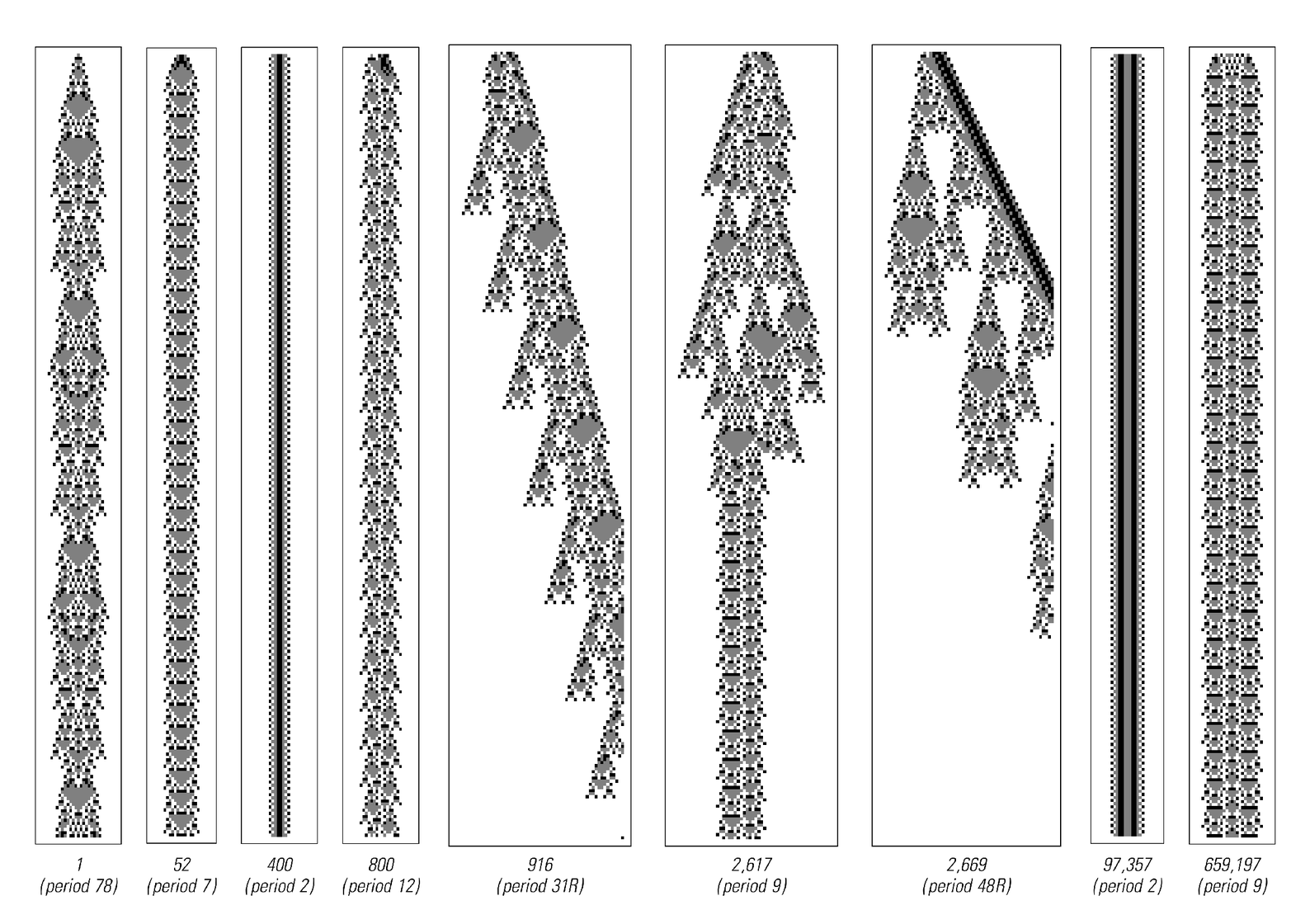So if moving structures are inevitable in class 4 systems, what other fundamentally different kinds of structures might one see if one were to look at sufficiently many large initial conditions?
The picture below shows the first few persistent structures found in the code 1329 cellular automaton from the bottom of page 282. The smallest structures are stationary, but at initial condition 916 a structure is found that moves—all much the same as in the two other class 4 cellular automata that we have just discussed.
But when initial condition 54,889 is reached, one suddenly sees the rather different kind of structure shown on the next page. The right-hand part of this structure just repeats with a period of 256 steps, but as this part moves, it leaves behind a sequence of other persistent structures. And the result is that the whole structure continues to grow forever, adding progressively more and more cells.

Persistent structures in the code 1329 cellular automaton shown on page 282.



